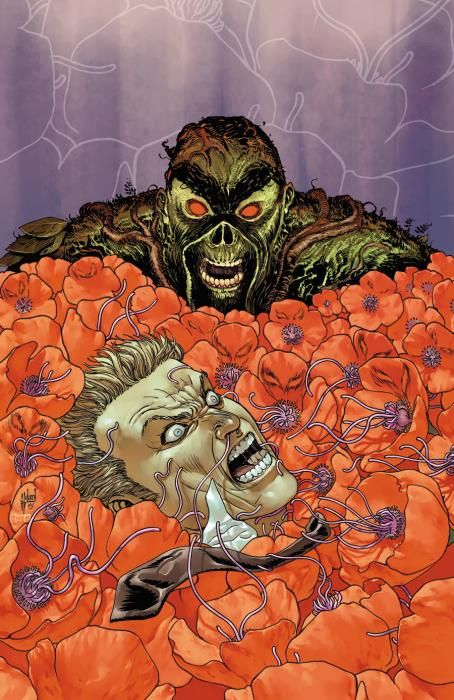Reading "Swamp Thing" #23 will make long-time readers of the character a little nostalgic, which may be deliberate. Charles Soule, Kano and David Lapham's comic here harkens back to an earlier time on the series, back when Alan Moore had first revamped the title. There's a lot in "The Whisky Tree" that evokes that earlier time, and that's a good thing.
Soule is both telling a small story and a large saga here; one that has lots of little stops along the way that leads up to something greater. It's the story structure that Moore used in the "Swamp Thing" story "American Gothic," and Soule achieves something similar here. What works especially well about "Swamp Thing" #23 is that it's a story that begins with a benign incident, but gradually works up into something horrible. A tree that dispenses whisky sounds like a dream come true, for both the average person and the down-on-its-luck Scottish town of Fetters Hill. Soule had the big turn of the wheel at the end of the previous issue as readers learned about the mind control and horror that was really behind it, and this issue follows through on it well.
Having John Constantine guest star is a tricky and gutsy move; the two characters are of course very well associated, but whenever he appears in "Swamp Thing" it's hard to keep from harkening back to those original stories guest-starring him in the Alan Moore-written era. Soule gets the character here -- more than the people currently writing his solo title at the moment -- although it helps that he's placed Constantine under the same mind-controlling agent as the rest of the town. Still, Soule deserves credit for making this feel like Constantine, and for that he gets a big thumbs up.
Kano and Lapham split the pencils for "Swamp Thing" #23, and it's impressive how seamless it is. The two work well together, aping off of each other's styles, with a clean and uncluttered overall look. They're able to get the creep factor going here -- the deranged look on Constantine's face with the blood dripping down his forehead isn't just because of the bodily fluids, but because of that look in his eyes and the set of his jaw -- and the dismembered Swamp Thing comes across as someone who's in genuine harm. The best moment in the book comes when Swamp Thing takes over the area, though; not just because it's a fun moment that (once again) harkens back to the Moore era, but because of how well it's drawn. The river running down Swamp Thing's shoulder is a fun little touch, as are the trees and foliage sprouting up all over his body. It really does come across as the world in revolt against the town, and it's a beautiful achievement on a visual level.
"Swamp Thing" #23 has Soule and Kano having settled in quite nicely on this title, and I appreciate that they've kept the book moving well after the departure of Snyder and Paquette. If you haven't taken a look at Soule and Kano's rendition of Swamp Thing, now feels like a good time to try.

